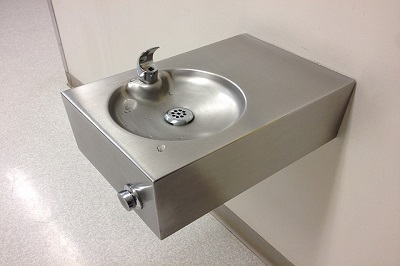
What is Lead?
Lead is a metal found naturally in the environment. It has also been widely used over the years in gasoline, house paint and plumbing fixtures. Lead can be harmful if it is inhaled, swallowed or absorbed into the body.
How does lead get in drinking water?
Lead can enter drinking water when pipes and fixtures that contain lead corrode. Homes built before 1985 are more likely to have lead pipes, lead fixtures and lead solder. When water is in contact with pipes, fixtures and soldering joints containing lead for several hours, lead can leach into the water supply.
How do I know if my tap water contains lead?
Most public water systems test for lead as a routine part of water quality monitoring. While these tests give a system-wide picture, they do not necessarily reflect conditions at a specific faucet. If drinking water does not come from a public water system, or you get your drinking water from a household well, you alone are responsible for assuring that it does not contain high lead levels. You cannot see, taste or smell lead in drinking water. Testing is the only way to confirm if lead is present or absent. A list of laboratories certified to perform testing are available from your state or local drinking water authority.
Is it safe to shower or bathe in water that contains lead?
Yes. Bathing and showering should be safe for adults and children. Human skin does not absorb lead in water.
Who is at risk?
Young children, infants, and fetuses are most vulnerable to lead. A dose of lead that would have little effect on an adult can have a significant effect on a child. Lead exposure in children has been linked to behavior and learning problems, lower IQ, hyperactivity, slowed growth, hearing problems and anemia.
Besides drinking water, are there other ways a child can be exposed to lead?
The most common source of lead poisoning in children is peeling or chipping lead-based paint. Lead-based paint was used in buildings and homes built before 1978. Other sources of lead include dust, soil, air and food, as well as imported cosmetics, pottery, herbal medicines, spices, jewelry and toys.
How do I know if my child has been exposed to lead?
You can find out if your child has been exposed to lead by having a simple blood test done by your child’s health care provider.
- All health care providers in New York State MUST test their patients at ages 1 and 2 for blood lead levels.
- You can check with your child’s health care provider to see if your child has been tested for lead.
- If you think your child may have been exposed to lead, contact you child’s health care provider and request a lead test.
Can lead be harmful during pregnancy?
Lead can pass from a mother to her unborn baby. Too much lead in a mother’s body can be a risk for miscarriage, cause the baby to be born too early or too small, and hurt the baby’s brain, kidneys and nervous system.
How can I reduce lead in drinking water at home?
- Run the cold water until it becomes as cold as it will get
- Only use cold water for food preparation, drinking and preparing infant formula
- Boiling water will NOT get rid of lead
- Use filters or treatment devices that are certified to remove lead by NSF International
 What about lead in water at my child’s school or day care facility?
What about lead in water at my child’s school or day care facility?
Since children spend a significant part of their days at school or in a child care facility, the safety of the drinking water at these facilities is as important as your
drinking water at home. Since lead leaches more easily into hot water than into cold water, food preparation staff and appropriate teachers should be instructed never to use hot water for drinking or cooking. Public schools are mandated by New York State Regulations effective on September 6, 2016 to perform lead testing. Private schools and daycare facilities may also wish to have the faucets that provide water used for consumption in their buildings tested.
Where should samples for lead be taken at schools and day care facilities?
Any outlet for potable water is a potential source of drinking water. Some outlets are regularly used by children and staff for drinking, cooking, or preparing infant formula, juice or coffee. Others, like a mop sink in a utility closet, should not be used for consumption. Facilities should prioritize sampling taps based on potential use and risk. The EPA recommends that certain water taps be treated as priority sites for lead sampling in schools and day care facilities.
What does the Health Department do to help protect against lead in drinking water?
The Westchester County Department of Health:
- Provides oversight to ensure that public water suppliers and public schools perform lead testing at sites that are most likely to have high lead levels
- Provides oversight to ensure that public water suppliers and public schools perform lead testing as often as required
- Provides oversight to ensure that public water suppliers provide treatment and public notification whenever lead is found above the EPA action level of 15 parts per billion (ppb)
- Reviews waiver requests and provides recommendations to New York State regarding schools that sampled between January 1, 2015 and September 6, 2016.
